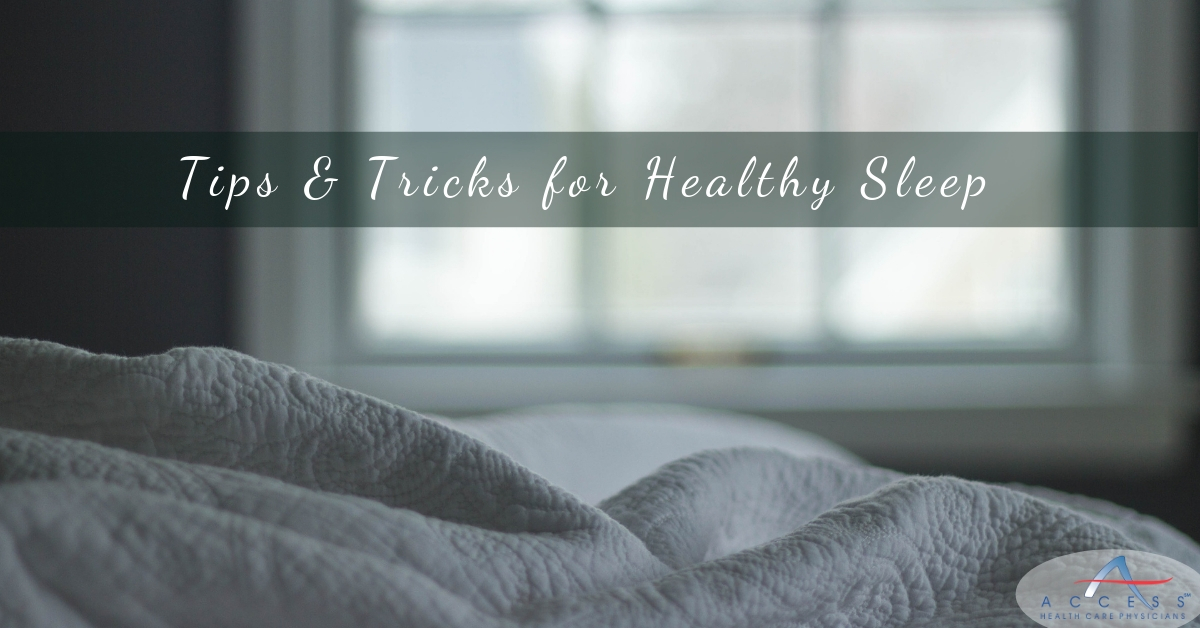During Sleep Awareness Week we focus on the importance of healthy, restful sleep. We all know sleep is important, but sometimes it’s not as easy as just laying down & closing our eyes. Follow along as we break down The National Sleep Foundation’s tips & tricks to help develop healthy sleep habits.
- Stick to a sleep schedule
-
- Be consistent – Choose asleep & wake up time and try to stick with it as much as possible, even on the weekends. This allows your body’s internal clock to adjust and help you fall asleep faster and stay asleep longer.
- Dim the lights – Try to dim as many lights as possible leading up to sleep. Avoid electronics such as tablets, computers, phones, and TV an hour before bed.
- Let the sunshine in – In the mornings, getting a dose of sunlight as you wake will help your body naturally wake up.
- Food for thought – Try to eat dinner at the same time every night and avoid eating or drinking several hours before bed.
- Create a relaxing bedtime routine
-
- Make a list – If too much is racing around in your mind, try writing them down. Or try a journal – write down the day’s summary, any thoughts, frustrations or successes and close the cover for the night.
- Breathe deep – Try 5 slow, deep breaths. Place your hand on your stomach and feel it rise and fall as you breathe.
- Concentrate on your senses – Stay present at the moment by focusing on how your sheets feel, what you hear and what you smell.
- Tense your toes – Try tensing your toes and holding for 10 seconds then relax. Repeat this exercise, or slowly work up your body, tensing and relaxing each muscle as you allow your whole body to relax.
- Avoid napping
-
- While an afternoon nap may help you feel like you can get through the day, if you have trouble sleeping at night, eliminating those naps may help.
- Get Moving
-
- As little as 10 minutes of vigorous aerobic activity can improve the quality of your sleep.
- Some people can exercise close to bedtime while others find it disruptive to sleep. Find the best time of day for you.
- Create a sleep-friendly space
-
- The ideal temperature for sleep is between 60-67 degrees.
- Try to create a distraction-free environment including noise and light.
- Some helpful tools may include blackout curtains, eye shades, ear plugs, fans, humidifiers and “white noise” machines.
- Try to decorate in cool colors such as greys, blues, and browns.
- Try all cotton bedding
- Pick your mattress & pillows carefully
-
- Everyone’s preference for a mattress and pillows is different. Find what works best for you.
- Generally, the life expectancy of a good quality mattress is 9-10 years. Make sure you replace as needed.
- Take advantage of light
-
- Avoiding bright lights in the evening and enjoying natural light in the morning helps train your internal clock.
- Avoid triggers
-
- Alcohol, cigarettes, caffeine and heavy meals can disrupt sleep.
- Try taking it to another room
-
- If you have other things to do, such as work, take it out to the bedroom to create a stronger association with your bed and sleep.
Sleep is important for our bodies and lack of healthy sleep can lead to many complications. If you are still having trouble getting to sleep, staying asleep or feeling rested and refreshed, it may be time to talk to your doctor. Keeping a sleep journal may also be helpful at your appointment when looking at sleep habits and patterns with your physician.
For more great articles and information, be sure to “Like” and follow us on Facebook, Instagram, Twitter, and LinkedIn.
Written By: S. Campbell for Access Health Care Physicians, LLC.


